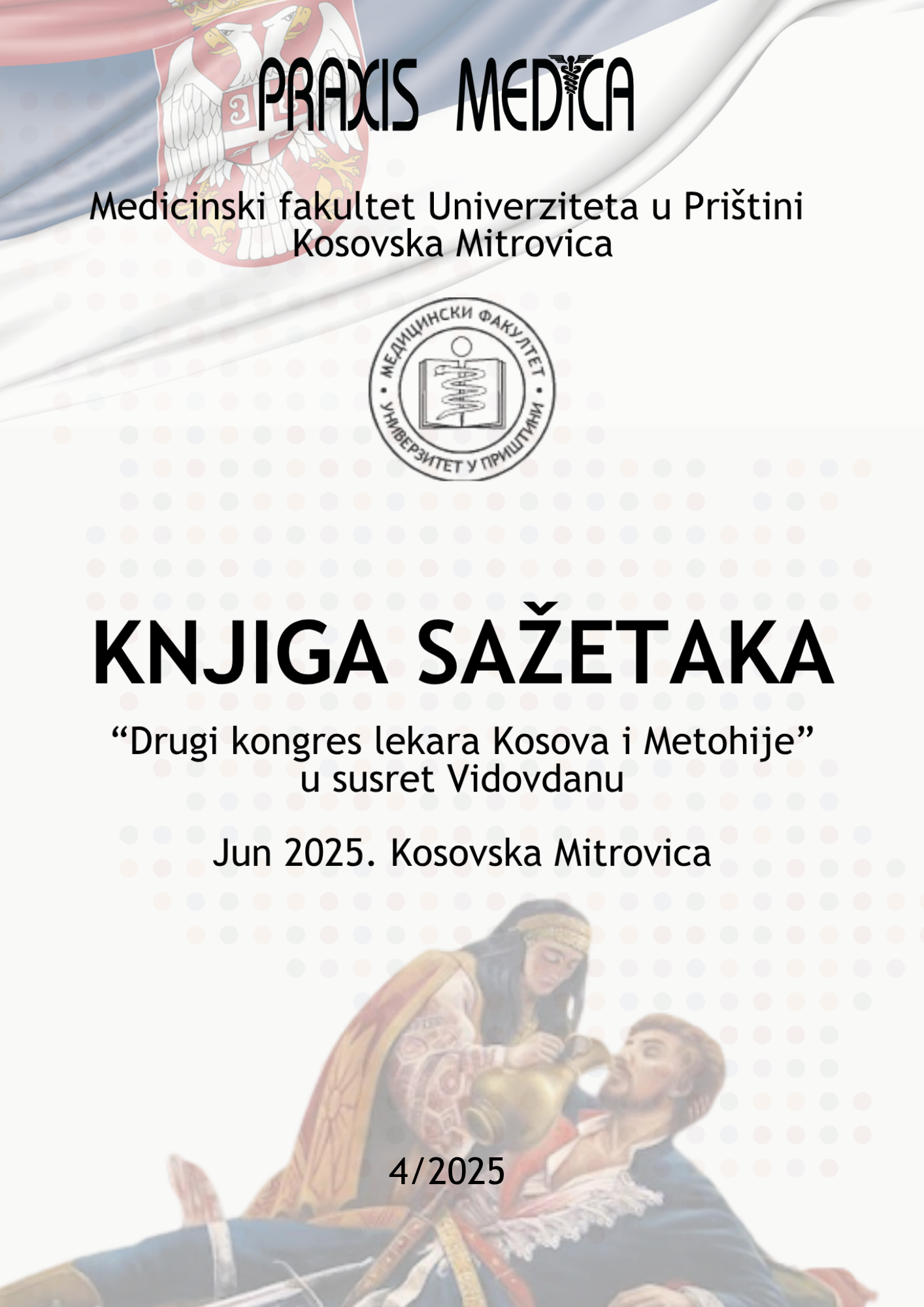Current issue

Volume 53, Issue 4, 2025
Online ISSN: 2560-3310
ISSN: 0350-8773
Volume 53 , Issue 4, (2025)
Published: 30.06.2025.
Open Access
All issues
Contents
15.01.2025.
Professional paper
STANDARD AND ADVANCED METHODS FOR DIAGNOSIS OF METABOLIC SYNDROME AND ITS COMORBIDITIES IN CHILDREN
The metabolic syndrome (MS) is a clinical entity of substantial heterogeneity, represented by the combination of obesity (especially central obesity),insulin resistance, impaired glucose tolerance, atherogenic dyslipidemia (high triglyceride levels and low levels of HDL-cholesterol (HDL-C)), and hypertension. Childhood obesity has become more common as a result of urbanization, bad diets, and more sedentary lifestyles.
The incidence of metabolic syndrome is ten times higher in children with obesity, and a special risk factor is the presence of obesity in the pediatric population, the classification of metabolic syndrome is based on standards set by the International Diabetes Federation (IDF).
Our goal is to summarize the diagnostic procedure of metabolic syndrome as well as comorbidity based on conventional methods and modern imaging procedures by analyzing the published papers.
Snezana Markovic Jovanovic, Aleksandar Jovanović, Jadranka Mitić, Slavica Pajovic, Danijela Jovanovic, Emin Bajramlic
15.01.2025.
Case Reports
THE IMPORTANCE OF EARLY DETECTION OF DIABETES INSIPIDUS IN CHILDHOOD
Introduction:
Diabetes insipidus (DI) is a disease that occurs due to inappropriate secretion of anti-diuretic hormone from the pituitary, or as a result of disorder in which the level of the kidneys cannot adequately respond to the secretion of this hormone. Also, it is known as central diabetes insipidus. The most common causes are head traumas, tumors of the hypothalamus and pituitary glands, inflammatory processes, histiocytosis, anomalies in the development of brain. It can appear in the form of familial diabetes insipidus or in certain syndromes (Wolfram syndrome). It is characterized by hypotonic polyuria higher than 3l/24h (which persists if even taking liquids stops), then by nocturia and compensatory polydipsia. Enuresis often occurs among children.
Case report:
A boy, aged 11, lives with his mother and brothers. Mother noticed that the boy was urinating frequently in last few months (diuresis 4.6 l/24h, and 3.25 l/24h). After two months, the boy developed double images and severe headaches, vomiting, inability to see, squinting in the right eye and headache in the back of the head. MNR of the endocranium indicates the presence of a tumor formation. The tumor was surgically removed, and the boy started with chemotherapy and radiotherapy. Due to persistent diabetes insipidus, the boy started using desmopressin-acetate - in tablet form. Active substance desmopressin - acts in the same way as the natural hormone vasopressin and regulates the kidney's ability to concentrate urine. The positive effect of taking the drug appeared after three weeks from the start of taking the therapy.
Conclusion:
Central (neurogenic) DI occurs as a result of a relative or absolute deficiency of antidiuretic hormone, which is responsible for the osmolality of body fluids. Based on this case, we want to show the importance of early diagnosis of the disease in order to improve the prognosis and the necessity of careful monitoring of these patients.
Danijela Jovanović, Snezana Marković- Jovanović, Teodora Tubić
01.12.2021.
Professional paper
Ellis-van Creveld syndrome
Introduction: Ellis-van Creveld syndrome is a rare genetic disorder characterized by short limb dwarfism, additional fingers and/or toes (polydactyly), abnormal development of fingernails and, in over half of the cases, congenital heart defects. Motor development and intelligence are normal. This disorder is inherited as an autosomal recessive condition. Some boys with this condition have been described with undescended testicles (cryptorchidism) or an abnormally located opening of the urine canal in the penis (epispadias). Abnormalities in the chest wall, spine and respiratory system have also been reported. Case report: The boy, aged two (2) years and eight (8) months, lives with parents and two brothers, in good living conditions. From the perinatal anamnesis, we can see that it is the third child from the third monitored pregnancy, delivered naturally at 39.gestational weeks, with normal birth parameters (3980/51/36), Apgar score 9. Immediately after birth, has been spotted complete postaxial polydactyly on both hands and postaxial poly-syndactyly (3,4,5,6) on the left foot, and ultrasound of the hips in early infancy indicated their unusual morphology and delayed bone maturation, which led to further medical investigation and treatment. Conclusion: Ellis-van Creveld syndrome is an extremely rare disease (this is the first registered case in our country). On the basis of this case, we want to express the importance of early diagnosis in order to improve the prognosis of the disease, and necessity of careful monitoring of these patients.
Danijela Jovanović, Snežana Marković-Jovanović, Ljiljana Vukadinović





